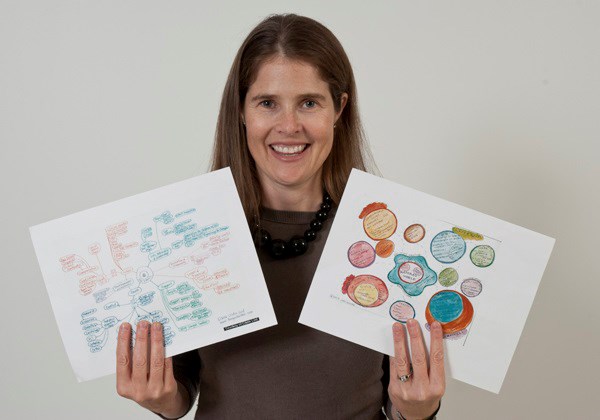Care mapping: Study shows putting experience on paper helps parents of children with medical complexity
Summary:
An exploratory study in Developmental Medicine & Child Neurology led by Sherri Adams, Nurse Practitioner in the Complex Care Program at SickKids, has shown that mapping care needs on paper can actually help both parents and health-care professionals care for children who have complex medical needs.
By Ana Fernandes, Intern, Communications and Public Affairs

For a parent of a child with medical complexity, the list of things on their mind can be quite long. Children with medical complexity have multiple diagnoses, a high prevalence of neurological impairment and technology dependence requiring multiple interventions to maintain their health. The care that a parent must navigate includes frequent hospitalization, multiple outpatient appointments, intensive community care services, and medical technology at home. It also includes a range of social and emotional supports around the unique challenges for children with medical complexity to participate in everyday activities. A family’s ability to take their child for a walk outside, play with their siblings, and other activities they may enjoy are dependent on this support.
An exploratory study in Developmental Medicine & Child Neurology led by Sherri Adams, Nurse Practitioner in the Complex Care Program at SickKids, has shown that putting all of these things on paper can actually help both parents and health-care professionals care for children who have complex medical needs.
Adams, who is also a SickKids Project Investigator and Adjunct Faculty at the Lawrence S. Bloomberg Faculty of Nursing at the University of Toronto, explored a process called care mapping. This is a process through which parents create a one-page graphic representation (or diagram) of their family experience of caring. In many instances, this resulted in a web-like picture with the child’s name in the centre and arrows or lines that connect to the treatments, therapies and social interactions that are all part of the child’s daily routine.
“A care map is the visual representation based on the family’s perspective,” says Adams. “We’ve always had the care plan as a complete health-care document, where health-care providers such as nurse practitioners maintain this succinct medical document that families use to access health care, but in talking to parents we have identified an incredible need for a tool that shares the family’s point of view.”
The study involved 15 parents and 30 health-care providers, which included a mix of professionals, some of whom knew the children’s cases. The results reported in the article were very positive: participants said they believed that care maps helped coordinate care, identify parental priorities of care and improve understanding of what it is like to care for a child with medical complexity.
“Using care maps is a fairly recent initiative. There are some clinicians in North America who have tried using them, however they are not yet a standard of care,” explains Adams. “To our knowledge, this is the first study about the use of care maps. We expected the maps to be a great tool to coordinate care, but what surprised us the most was how it enhanced the compassion from the health-care team towards the family. The health-care providers reported a better understanding of what the families go through.”
Adams also says the study was a perfect fit for the Child and Family-Centred Care approach at SickKids, which acknowledges that patients and their families are at the core of all of the hospital’s activities. The next steps will be to study the use of care maps in clinical care and evaluate this process. In this study, it is anticipated that care maps would be created by the family; they would have a copy and a copy would be kept in the patient chart. The ultimate goal of such a clinical research study is that care mapping would become a consistent resource available to families and health-care providers at SickKids in the future.
Listen to Adams as she discusses the paper, The Utility of Care Maps for Children with Medical Complexity.

